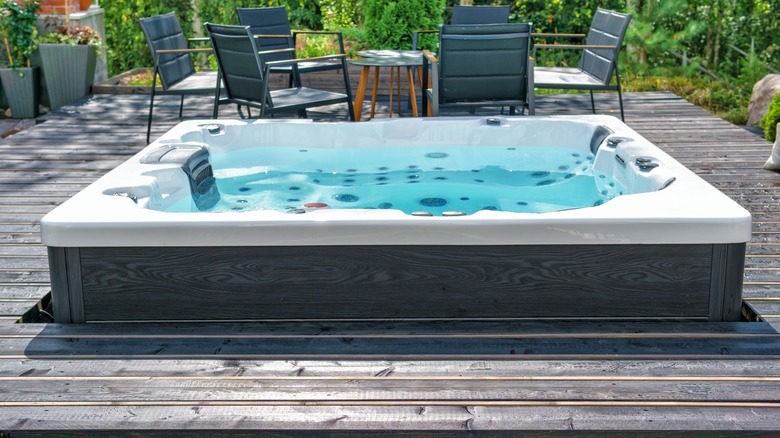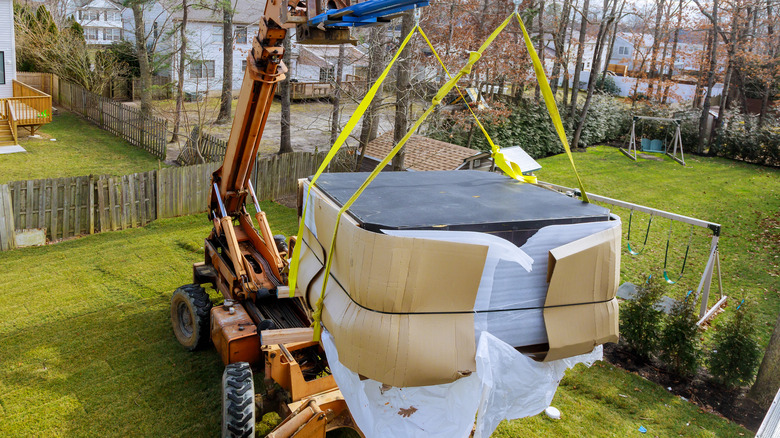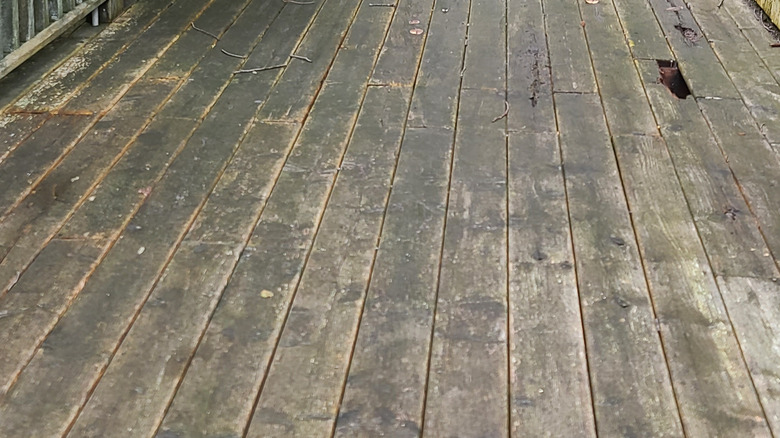Think Twice Before Putting A Hot Tub On Your Deck. Here's Why
Stepping out of your living space to bask in hot bubbles underneath the twinkling starlight or dappled shade may seem like an idyllic retreat. Unfortunately, the journey to the luxurious hot tub adorning your deck is more long-winded than the actual walking distance. For starters, you must snake through local regulations and codes to confirm you're in line with the ordained requirements. For instance, Michigan's residents must apply for building and electrical permits before installing a tub outdoors. Additionally, homeowners must meet sundry requirements of putting up physical barriers, guardrail extensions, and electric equipment to ensure maximal safety.
Further, you'll have to plan for provisions. Do you have a handy water source, like a hose or a spigot, to access water? Will you need an additional drainage channel to empty the tub? Do you have the right electrical connections to adequately heat or filter the tub? You must also ensure there's enough maneuvering room on the deck; some zoning rules stipulate at least 1 foot on all sides once all the systems are set up.
Can your deck pull the (tub) weight?
Let's address the elephant in the room: Is your deck sturdy enough to support the hot tub? After all, plunge baths aren't lightweight, sometimes weighing over 5,000 pounds (depending on size, water, and people), putting most mini trucks to shame. Although sellers maintain their decks sustain a load of 100 pounds per square foot — most don't. Odds are they only reach half point (50 pounds a square foot) if they follow typical construction standards. Here, permit guidelines come back into play. To illustrate, a Tiffin-based homeowner must seek approval and submit a licensed architect's design to mount a deck that bears over 40 pounds per square foot, further muddying the equation.
To know if you can realize your soaking dreams, parse through the deck plans to learn their load capacity. But if they're lost to time, put your brain to work. Combine the tub's weight with the weight of the water (8.34 pounds per gallon) and the people (depending on who will use the hot tub) it can hold. Divide the sum with the deck area (in square feet) to calculate its bearing capacity. Unless you plan to fix an in-ground tub (at least 2 inches deep) capable of supporting 100 pounds per square foot, get ready to reinforce your deck for all capacities exceeding 50 pounds. Or, better yet, hire a contractor to make the measurements and suggest a plan.
Maintenance adds up
Securing a hot tub on your deck entails other operating expenses, making it an impractical implant. To elaborate, a pre-existing deck's age and condition can play spoilsport if it's near-dilapidated or made of poor materials. After all, the water splashes on the sundeck will cause it to rot. Worse, the moisture might not dry from below the tub, exposing the wood to mold and mildew. This can force you to swap out the boards for rot-resistant options or splurge on vents and fans to improve ventilation. Alas, both options cost quite a penny.
Besides, you must periodically replace the joists, bolts, and screws holding the tub in its spot to avoid mishaps. Utilities will hurt your pocket, too. Unless there's a cover, you'll need to change the water in your hot tub frequently, increasing your water, electricity, and cleaning bills. Moreover, you may have to fork out over $5,000 if you reinforce the deck with concrete pads, pavers, or bricks.


